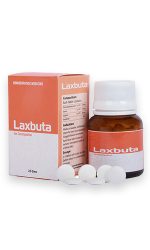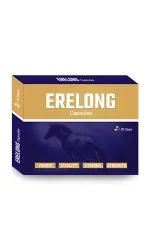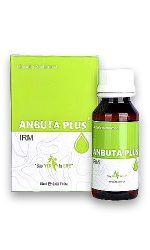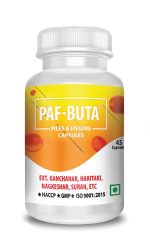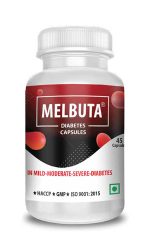Running head: Lung histology in BALB/c asthmatic mice HM Oberholzer1 E Pretorius1
1Department of Anatomy, School Medicine, Faculty of Health Sciences of the University of Pretoria, South Africa
Correspondence author: E Pretorius
Department of Anatomy, University of Pretoria, BMW Building, PO Box 2034,
Faculty of Health Sciences, University of Pretoria, Pretoria, 0001, SOUTH
AFRICA. Tel: +27 12 319 2533; Fax: +27 12 319 2240;
E-mail: [email protected]
Abstract
Animal models of bronchial hyperresponsiveness have been successfully used to investigate the pathophysiology of asthma. When mice are sensitized and challenged with an allergen, such as OVA, they experience symptoms and processes similar to that of humans, and are therefore widely used as asthmatic animal models. In the current study the BALB/c murine asthmatic animal model was use to investigate the histological changes that occur in the lungs of asthmatic animals that received no treatment, compared to two groups of asthmatic animals that were treated with a homeopathic immunodulator Modul8® and hydrocortisone as positive control, respectively. Eosinophil counts in the bronchial lavage of the animals were also analyzed, since it is known that eosinophil counts are increased in the bronchial lavage in asthma. Results indicated that eosinophil counts were elevated in asthmatic animals compared to the controls, but were found to be significantly decreased in the treatment groups. Also, in the asthmatic, untreated animals, histological changes, typical associated with the inflammatory process was found. Both treatment groups compared well to that of the control animals, indicating that the homeopathic product might be successfully used in the treatment of asthma. Key Words: Asthma, Modul8®, inflammation, lungs, eosinophils
Introduction
Asthma is associated with a wide range of symptoms and effects, which include chest tightness, wheezing, coughing, increased airway obstruction and airway hyperresponsiveness. The latter part represents the classic physiology of asthma. Airway inflammation is considered to be a central feature of asthma pathogenesis and its clinical manifestations and plays a critical role in airway obstruction and hyperresponsiveness1. Many studies have been done by using bronchial hyperresponsiveness animal models to investigate the pathophysiology of asthma. When mice are sensitized and challenged with an allergen they experience an influx of inflammatory cells into the airways, a process similar to that of humans and are therefore widely used as asthmatic animal models 2-6. Eosinophilia and mucus cell hyperplasia are some of the most notable histopathalogical signs of human asthmatics that can also be observed in mouse models of asthma 7-8. In the current study the murine asthmatic BALB/c model was used to investigate the histological changes that occur in the lungs of asthmatic animals. The lungs of OVA challenged, untreated asthmatic animals were compared to animals treated with a homeopathic immunomodulator, MODUL8® as well as Hydrocortisone, which was used as positive control. White blood cell counts in the bronchial lavage fluid of the animals in the different treatment groups were also analyzed specifically to investigate the eosinophil count, since it was previously found that the number of eosinophils is significantly increased in the asthmatic animals compared to healthy animals 9. Eosinophils are also involved in the inflammatory cascade of asthma and migrate into the airways my means of a chemo attractant 1. MODUL8® is a complex homeopathic product that consists of a number of different substances namely: Aconitum napellus (D20), Arsenicum album (D18), Asafoetida (D20), Calcarea carbonica (D16), Conium maculatum (DH17), Ipecacuanha (D13),Phosphorus (D20), Rhus toxicodendron (D17), Silicea (D20), Sulfur (D24), Thuja occidentalis (D19), Alcohol (0.2% v/v) and purified water (44.050 ml).The composition per 50 ml bottle is expressed as declared potencies (D) which indicates an index of 10-fold dilution. An immunomodulator is an agent that enhances the immunity of an individual 10. Several studies have shown that products of natural origin can effectively be used in treating diseases and maintaining the resistance to infections of organisms 11 and are also effective against inflammatory conditions. Therefore this product was used as treatment in the asthmatic mouse model, to investigate its possible effect on the inflammatory process involved in asthma.
Materials and Methods
Implementing the asthmatic BALB/c mouse animal model Six-week-old (female) BALB/c mice (each of average weight 20g), maintained in the University of Pretoria Biomedical Research Centre and provided OVA-free food (Balanced EpolT mice cubes and pellets, obtained from EPOL- a division of Rainbow Farms PTY LTD, SA) and water ad libitum, were used. Polycarbonate type III cages were obtained from Techniplast. The animals were kept in a barrier unit with a temperature range of 20-24°C and a relative humidity of 40-60% with a twelve hour day light and twelve hour night time. Six mice were housed per cage and autoclaved pinewood shavings were used as embedding material. White facial tissue paper was also added for enrichment. All experimental protocols complied with the requirements of the University of Pretoria’s Animal Use and Care Committee Ethical clearance number: (151/2006) and complies to the WHO/UNESCO standards.
Mice were divided into the following groups: Six control mice, six asthmatic mice, six mice exposed to physiologically comparable levels of Modul8® (10%) and six mice exposed to hydrocortisone at a concentration of 100mg/kg.
Sensitization of mice (on day 0 and 5) involved the intraperitoneal injection of 25mg ovalbumin (OVA) (Grade V; Sigma Aldrich) and 2mg Al(OH)3 dissolved in 0.5ml of 0.9% saline solution. All the mice except the control mice were sensitized.
The mice were nebulized twice daily for one hour on days 13 to 15 and again on days 30 to 32 with 1% OVA dissolved in PBS. An inhalation exposure system (IES) (Glas-COL® Inhalation Exposure System, Model 099C A4212, Terre Haute, Indiana) was used for the nebulization. Nebulization involved placing the mice inside a stainless steel sire mesh basket, which is divided into five equal compartments. Each compartment held the six animals from the same experimental group. One complete cycle in the IES included a preheat cycle of 15 minutes followed by the nebulization with the OVA for 60 minutes, a cloud decay cycle for 15 minutes and a decontamination cycle also 15 minutes.
Treatment involved the administration of Modul8® and hydrocortisone. Hydrocortisone was injected intra-peritoneally, while Modul8® was administered orally. For humans it is generally advised to take 10 drops of Modul8® 3 times a day. And since the average of 10 drops equals approximately 600μl, it can be said that the human takes in 600 μl three times per day. This equals an amount of 1800 μl per day (1.8ml / day). When the average weight of a human adult is also considered (between 60-70kg: average 65kg): It can therefore be assumed that a normal person that weighs 65kg will take in 1800ul = 1800μl / 65kg. This will imply that the intake is: 28μl/kg. The average weight of a mouse is around 20g (0.02kg). And since it was established that the intake per day is 28μl/kg, it can be calculated that each mouse should receive 0.56μl of the Modul8® per day in order have the same values as the human. The first treatment procedures took place on days 15 to 18, 22 to 25 and the last set of treatments were on days 36 to 39.
Bronchial lavage techniques
After termination, a small skin incision was made in the skin of each mouse in the ventral of the trachea. The trachea was exposed by blunt dissection and a small transversal incision was made below the larynx. Through the sheath of a 21G venous catheter 0.3 ml of saline was injected into the trachea and aspirated with a syringe. The bronchial lavage fluids collected for the individual groups were pooled, centrifuged for 2 minutes at 1000rpm and smears were made. The smears were stained with Rapid Heamatological Stain. White blood cells were counted under a 100x magnification and up to a hundred cells were counted per slide.
Tissue for Histology
Lung tissue was collected for histological investigation. Tissue samples were fixed in 4% Formaldehyde. The tissue was removed from the fixative and serially dehydrated in 70% and 90% ethanol, followed by three changes of absolute ethanol. The samples were then infiltrated in LR White over three days after which they were polymerized in gelatin capsules at 60°C for 48 hours. 1μm Sections were made with an ultramicrotome and stained with Toluidine blue. The samples were viewed with a Nikon Optiphod transmitted light microscope (Nikon Instech Co., Kanagawa, Japan).
Results
Graph 1 reveals the average number of white blood cells counted in the bronchial lavage in the different experimental groups. The asthmatic group possessed a significantly greater eosinophil count compare to the control and two treatment groups (p-value = 0.00132).
Figure 1A (10x magnification) and 1B (40x magnification) represent a section of the lung of a normal healthy animal where alveoli (Label A) is seen, as well as a few inflammatory cells (Label C). In the higher magnification (Figure 1B) the black arrow indicates the interalveolar area which is very small due to the lack of many inflammatory cells. Figure 2A (10x magnification) and 2B (40x magnification) are light micrographs of the lungs of the OVA-challenged asthmatic animals where a marked influx of inflammatory cells (Label C) is observed. In the higher magnification (Figure 2 B) an enlarged, congested capillary is observed. The black arrow indicates the interalveolar area which seemed congested and filled with exudates, containing white blood cells, red blood cells and fibrin – characteristic of the inflammatory condition of the lungs 12. This congested appearance is not present in the control animals (Figure 1A and B). Figure 3A (10x magnification) and 3B (40x magnification) shows the lung sections of asthmatic animals treated with the homeopathic immunomodulator Modul8®. Alveoli (Label A), a bronchiole (Label B) as well as inflammatory cells (Label C) are visible. The capillary (Label V) appear smaller and less congested as seen in the asthmatic animals (Figure 2B, Label V). The black arrow in Figure 3B indicates the interalveolar area which is much smaller than that seen in the asthmatic group (Figure 2B). Therefore, in this treated group congestion is reduced and much less inflammatory cells are present compared to the asthmatic group. Figure 4A (10x magnification) and 4B (40x magnification) represents the micrographs of the hydrocortisone-treated animals, where even less inflammatory cells (Label C) are present. The black arrow (Figure 4B) indicates the interalveolar area which seems similar to that of the Modul8® treated group and much smaller than that of the asthmatic group; the area has more open spaces and is less congested without the presence of exudate, as are seen in the asthmatic group. This morphology is expected, as hydrocortisone is an effective anti-inflammatory treatment for asthma.
Discussion
Inflammatory conditions such as asthma involve a wide range of cell types and cellular mediators. The inflammatory cascade is a model that was developed to explain the complex process of inflammation. This model suggests that the inflammation associated with the asthmatic response occurs in seven different phases 1.
The process starts off with the sensitization phase, or the antigen presenting phase, which occurs as a result of antigen presentation to a T-lymphocyte. This phase involves a wide range of cells such as dendritic cells, monocytes and B lymphocytes. Upon delivering of the antigen to a T-lymphocyte, the latter responds by changing into an allergic T-Helper 2 or TH-2 cell and emits signals through a cytokine network. The interaction between the cytokines and the B-lymphocytes causes the B-lymphocytes to become plasma cells that produce IgE which binds to mast cells in order to bind the allergen and thereby completing the sensitization phase of the inflammatory cascade 1. This phase is followed by the stimulation phase where a number of factors play a role in stimulating an exacerbation of the disease. These factors, such as allergens and environmental agents, act through the triggering of mast cells and IgE together with the triggered mast cells can cause long-term asthmatic inflammation whereas blocking of IgE can limit reaction to allergen and thereby decrease the associated inflammation 1.
The next phase in the inflammatory cascade is called the cell signaling phase in which the recruitment of inflammatory cells into the airways takes place. In this phase a number of cells, cytokines and markers play a role. These include Tlymphocytes, macrophages and monocytes, IL-4 and IL-13 and TNF-alpha. The cell signaling phase is followed by the migration phase where leukocyte migration into the airways takes place. Eosinophils, neutrophils, lymphocytes and monocytes are some of the cells involved, and this process is possibly mediated by the release of chemo attractant mediators by the signaling cells.
Activation of the inflammatory cells follow in order to produce the physiological changes associated with asthma. IL-1, IL-5, TNF-alpha, eotaxin and IL-8 plays a role in the activation of the inflammatory cells. Eosinophils are activated in the lungs of asthmatic patients 1. An increased number of eosinophils in bronchial lavage fluid of asthmatic animals have also been reported which emphasizes the important role of eosinophils in the inflammatory process associated with asthma9. One of the characteristics of asthma is the tissue alteration. This takes place in the epithelium, basement membrane, smooth muscles and nerves. The changes that occur in the epithelium of asthmatics include abnormal epithelium with the presence of increased mucus-secreting cells. The sub-epithelial basement membrane appears thickened due the action of the eosinophils. The connective tissue associated has an increased collagen deposition. The smooth muscle may appear hyperplastic as well as hypertrophic. The last phase in the inflammatory cascade includes the resolution phase where the hypothesis exists that abnormal or incomplete resolution of the inflammation may play a role in the disease and its severity 1.
In 2003, Evans et al reported that murine models of asthma exhibit a TH2 lymphocyte-driven eosinophilic pulmonary inflammation as well as airway hyperresponsiveness that are very important features of the inflammatory process involved in human asthmatics 2. One of the most prominent features of asthma is eosinophil infiltration of the peribronchial regions that is one of the characteristics of airway inflammation 13-15 and eosinophil numbers correlate with the severity of the disease 16.
The presence of eosinophils in the lungs of allergic mice is an indication and confirmation of asthma-like eosinophilic inflammation 17-18. In the current study this could also be observed in the lungs of the asthmatic animals (Figure 2A and B) where it appeared congested with very little open spaces between the alveoli. However, the lungs of the treated animals (both Modul8® and hydrocortisone) (Figure 3A and B, Figure 4A and B) appeared similar to the control animals (Figure 1A and B) with less severe influx of inflammatory cells and less congested with larger open spaces between the alveoli.
From the findings in the current study it can therefore be concluded that Modul8®, histologically, have the ability to stabilize the changes and remodeling caused in the lungs by the inflammatory process involved in asthma. Modul8® also significantly decreased the eosinophil counts in the bronchial lavage of the asthmatic animals. It is therefore suggested that Modul8® possesses anti-inflammatory properties and might therefore successfully be usedin the treatment of asthma.
References
Wenzel S E, Asthma as an inflammatory disease, Ann Allergy, 72 (1994) 261
Evans K L J, Bond R A, Corry D B, Shardonofsky F R, Frequency dependence of respiratory system mechanics during induced constriction in a murine model of asthma, J Appl Physiol, 94 (2003) 245
Hamelmann E, Takeda K, Schwarze J, Vella A T, Irvin C G, Gelfand E W, Development of Eosinophilic Airway Inflammation and Airway Hyperresponsiveness Requires Interleukin-5 but Not Immunoglobulin E or B Lymphocytes, Am J Respir Cell Mol Biol, 21 (1999) 480
Kumar R K, Foster P S, Modeling allergic asthma in mice: pitfalls and Opportunities, Am J Respir Cell Mol Biol, 27 (2002) 267
Leigh R, Ellis R, Wattie J, Southam D S, De Hoogh M, Gauldie J, et al, Dysfunction and remodeling of the mouse airway persist after resolution of acute allergeninduced airway inflammation, Am J Respir Cell Mol Biol, 27 (2002) 526
Tomioka S, Bates J H, Irvin C G, Airway and tissue mechanics in a murine model of asthma: alveolar capsule vs. forced oscillations, J Appl Physiol, 93 (2002) 263
Uller L, Lloyd C M, Rydell-Tormanen K, Persson C G, Erjefalt J S, Effects of steroid treatment on lung CC chemokines, apoptosis and transepithelial cell clearance during development and resolution of allergic airway inflammation, Clin Exp Allergy, 36 (2006) 111
Persson C G, Erjefalt J S, Korsgren M, Sundler F, The mouse trap, Trends Pharmacol Sci, 18 (1997) 465
Oberholzer H M, Pretorius E, Smit E, Ekpo E, Humphries P, Auer R E, Bester M J, Investigating the effect of Withania somnifera, Selenium and Hydrocortisone on blood count and bronchial lavage of experimental asthmatic BALB/c mice, Scand J Lab Anim Sci, 35 (2008)
Piemonte M, De Freitas Buchi D, Analysis of IL-2, IFN-γ and TNF-α production, α5β1 integrins and actin filaments distribution in peritoneal mouse macrophages treated with homeopathic medicament, J Submicrosc Cytol Pathol, 34 (2002) 255
Pereira W K V, Lonardoni M V C, Grespan R, Caparroz-Assef S M, Cuman R K N, Bersani-Amado C A, Immunomodulatory effect of Canova medication on experimental Leishmania amazonensis infection, J Infect, 51 (2005) 157
Ross M H, Kaye G I, Pawlina W, Histology: A text and atlas (Lippincott Williams & Wilikins, Philadelphia) 2003, 588
Bousquet J P, Chanez J Y, Lacoste G, Barneon N, Ghavanian I, Enander P, et al, Eosinophilic inflammation in asthma, N Engl J Med, 323 (1990) 1033
Holgate S T, Roche W R, Church M K, The role of the eosinophil in asthma. Am Rev Respir Dis, 143 (1991) 66
Kay A B, Eosinophils and asthma, N Engl J Med, 324 (1991) 1514
Corrigan C J, Kay A B, T cells and eosinophils in the pathogenesis of asthma, Immunol Today, 13 (1992) 501
Gleich G J, Kita H, Bronchial asthma: Lessons from murine models, Proc Natl Acad Sci, 94 (1997) 2101
Geba G P, Askenase P W, Murine models of allergy, asthma and hyperresponsiveness.In: Kay AB, ed. Allergy and allergic diseases. (Oxford: Blackwell Science) 1997, 1056



Figure 1 : Lung sections of the mice stained with Toluidine Blue. 1A and B : Control, 2A and B : Asthma, 3A and B : ANBUTA PLUS and 4A and B : Hydrocortisone. Label A : Alveoli. Label B : Bronchiole. Label C : Inflammatory cells.Label V : Blood vessel fille with red blood cells

